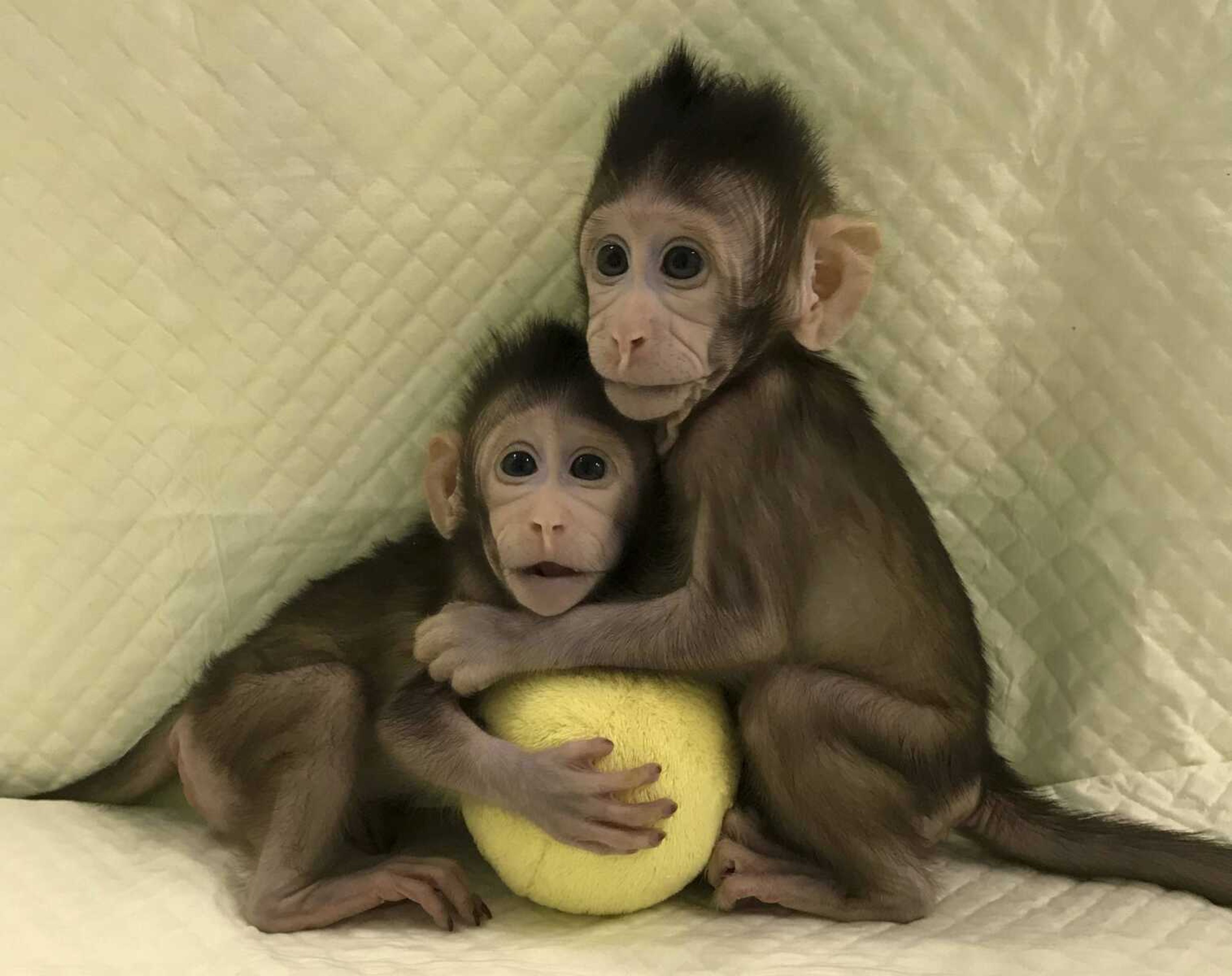Scientists successfully clone monkeys
NEW YORK -- For the first time, researchers have created healthy monkeys, using the same cloning method with Dolly the sheep, bringing science an important step closer to being able to do the same with humans. Since Dolly's birth in 1996, scientists have cloned nearly two dozen kinds of mammals, including dogs, cats, pigs, cows and polo ponies, and have also created human embryos with this method. ...
NEW YORK -- For the first time, researchers have created healthy monkeys, using the same cloning method with Dolly the sheep, bringing science an important step closer to being able to do the same with humans.
Since Dolly's birth in 1996, scientists have cloned nearly two dozen kinds of mammals, including dogs, cats, pigs, cows and polo ponies, and have also created human embryos with this method. But until now, they have been unable to clone babies this way in primates, the category that includes monkeys, apes and people.
"The barrier of cloning primate species is now overcome," declared Muming Poo of the Chinese Academy of Sciences in Shanghai.
In a paper released Wednesday by the journal Cell, he and his colleagues announced they successfully created two macaques. The female baby monkeys, about 7 and 8 weeks old, are named Zhong Zhong and Hua Hua.
"It's been a long road," said one scientist who tried and failed to make monkeys and was not involved in the new research, Shoukhrat Mitalipov of Oregon Health & Science University. "Finally, they did it."
In principle, Poo said, the feat means humans can be cloned. But he said his team has no intention of doing so. Mainstream scientists generally oppose making human babies by cloning, and Poo said society would ban it for ethical reasons.
Instead, he said, the goal is to create lots of genetically identical monkeys for use in medical research, where they would be particularly valuable because they are more like humans than other lab animals such as mice or rats.
The process is still very inefficient -- it took 127 eggs to get the two babies -- and so far it has succeeded only by starting with a monkey fetus. The scientists failed to produce healthy babies from an adult monkey, though they are still trying and are awaiting the outcome of some pregnancies. Dolly caused a sensation because she was the first mammal cloned from an adult.
The procedure was technically challenging. Essentially, the Chinese scientists removed the DNA-containing nucleus from monkey eggs and replaced it with DNA from the monkey fetus. These reconstituted eggs grew and divided, finally becoming an early embryo, which was then placed into female monkeys to grow to birth.
The scientists implanted 79 embryos to produce the two babies. Still, the approach succeeded where others had failed.
The Chinese researchers said cloning of fetal cells could be combined with gene-editing techniques to produce large numbers of monkeys with certain genetic defects causing disease in people. The animals could then be used to study such diseases and test treatments. The researchers said their initial targets will be Alzheimer's and Parkinson's.
Mitalipov, noting the Chinese failed to produce healthy babies from adult cells, said he suspects attempts to clone babies from a human adult would also fail. "I don't think it would be advisable to anyone to even think about it," he said.
Jose Cibelli, a scientist at Michigan State University, said it might be technically possible someday but "criminal" to try now because of the suffering caused by the many lost pregnancies the process entails. If the procedure became efficient enough in monkeys, he said, society could face "a big ethical dilemma" over whether to adapt it for humans. The key step of transferring DNA might be combined with gene editing to correct genetic disorders in embryos, allowing healthy babies to be born, he said.
Connect with the Southeast Missourian Newsroom:
For corrections to this story or other insights for the editor, click here. To submit a letter to the editor, click here. To learn about the Southeast Missourian’s AI Policy, click here.








